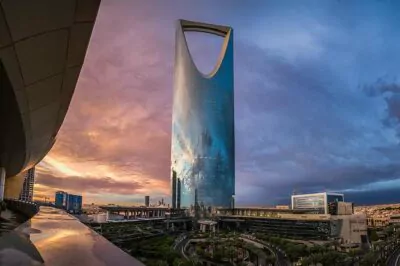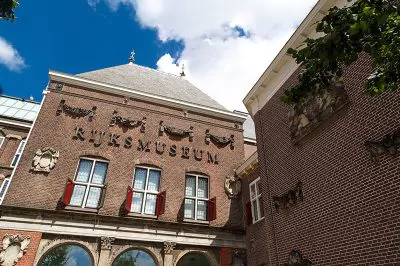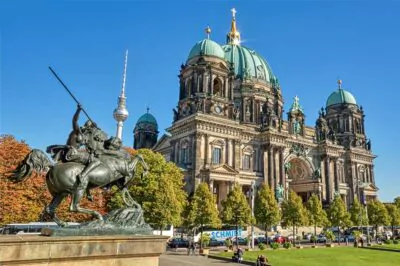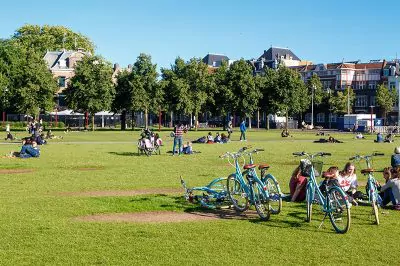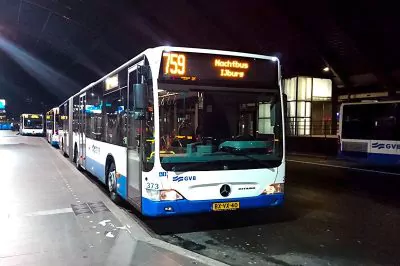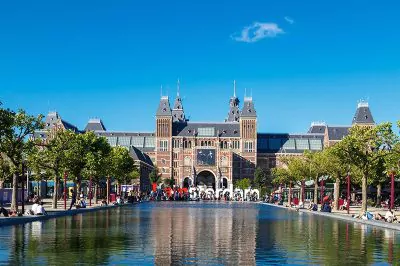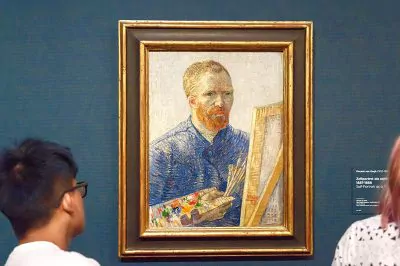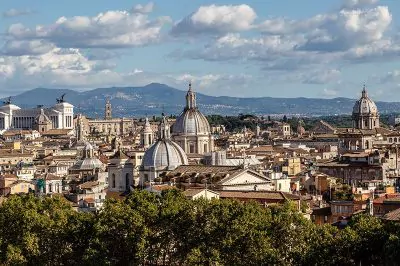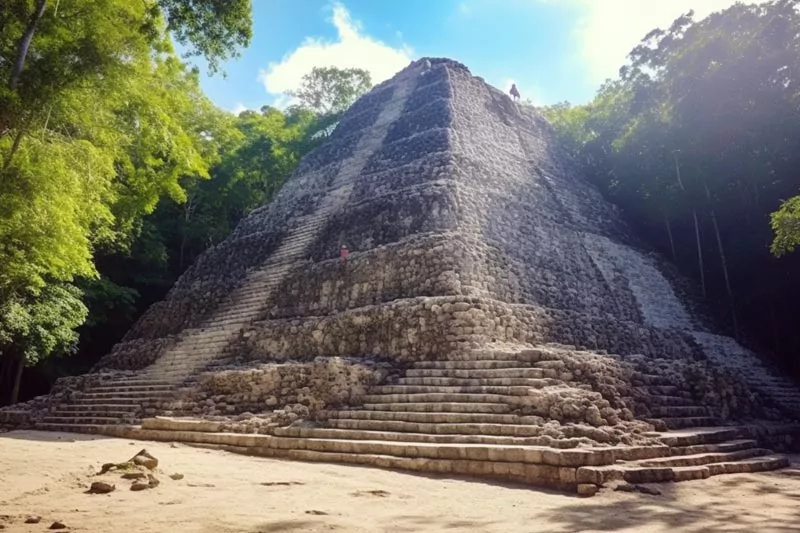
Coba Ruins: The Mayan Metropolis Lost in Time
If you’ve ever felt the urge to tap into your inner Indiana Jones, look no further than the alluring mysteries of the Coba Ruins (Zona Arqueológica de Coba). Nestled deep within the lush jungles of Mexico’s Yucatán Peninsula, these ruins are a living testament to the grandeur of the ancient Mayan civilization.
As an explorer, history buff, or someone merely interested in ancient cultures, there’s a magical allure to Coba that’s simply impossible to resist.
Coba is more than just another archaeological site; it’s an enchanting portal into a world that existed centuries ago. Here, the past intertwines with the present, whispering tales of a civilization’s glory and downfall in each stone and carving.
History of Coba
Before we dive headfirst into our exploration, it’s worth understanding the rich history of Coba and its place in the Mayan civilization. The Mayan civilization was one of the most advanced pre-Columbian societies, thriving in arts, architecture, mathematics, and astronomy.

In its heyday, around 600-900 AD, Coba was a major hub, possibly housing over 50,000 inhabitants and playing a crucial role in trade and socio-political affairs.
While Coba’s importance waned with the rise of other cities like Chichen Itza, its story was far from over.
Rediscovered in the mid-19th century by explorers John Lloyd Stephens and Frederick Catherwood, the ruins of Coba caught the world’s imagination.
Its excavation and study have since helped us piece together critical aspects of Mayan culture and history.
Location of Coba Ruins: Why It Matters
Geographically speaking, Coba’s location is fascinating. Positioned between two large lagoons, it’s strategically located for trade, with easy access to various resources.
The city’s network of stone causeways, known as sacbeob, connected it to other important Mayan cities, allowing the movement of goods and strengthening political alliances.
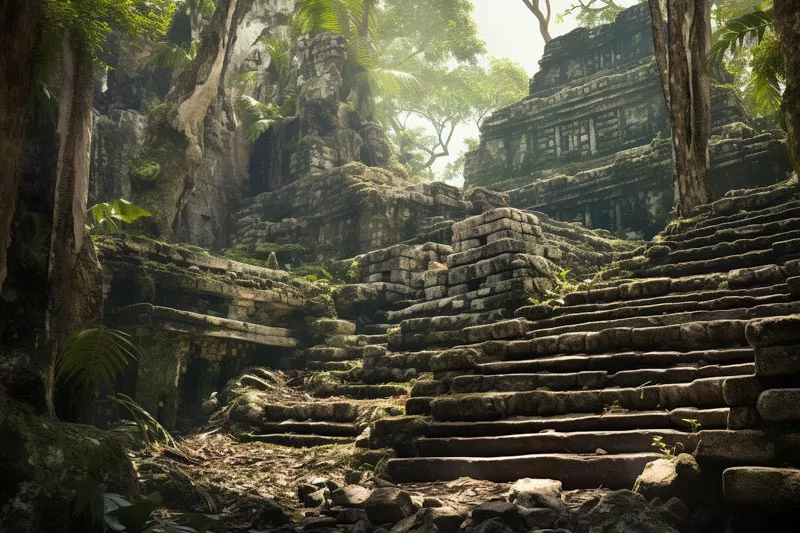
Indeed, geography played a significant role in the rise of Coba as a potent trade center.
From its unique location, it managed to control major trade routes, handling commodities like obsidian, jade, pottery, and feathers. It’s a classic example of how the Mayans leveraged their geographical assets for socio-economic benefits.
The Structures of the Ruins: An Architectural Marvel
Coba’s ruins offer an architectural feast for the eyes. Its structures, designed with an intricate understanding of aesthetics and utility, provide us with invaluable insights into the architectural prowess of the ancient Mayans.
Comprising several large pyramid structures, ball courts, plazas, and stelae (stone monuments), the ruins provide a unique peek into a bygone era.
Nohoch Mul Pyramid
Among the numerous structures at Coba, the Nohoch Mul Pyramid stands out, literally! Standing at a height of about 42 meters, it’s the tallest pyramid in the northern Yucatán Peninsula.
Imagine climbing the 120 steps to the top of this ancient marvel, catching your breath as you take in panoramic views of the jungle below. It’s as close as we’ll ever get to seeing the world through the eyes of a Mayan ruler.
Exploring the Minor Sites within the ruins
The ruins aren’t just about the grand structures and towering pyramids. On your journey through the park, you’ll come across a plethora of minor sites that, while smaller, are no less intriguing.
These hidden gems often escape the limelight but are just as significant in piecing together the narrative of this ancient city.
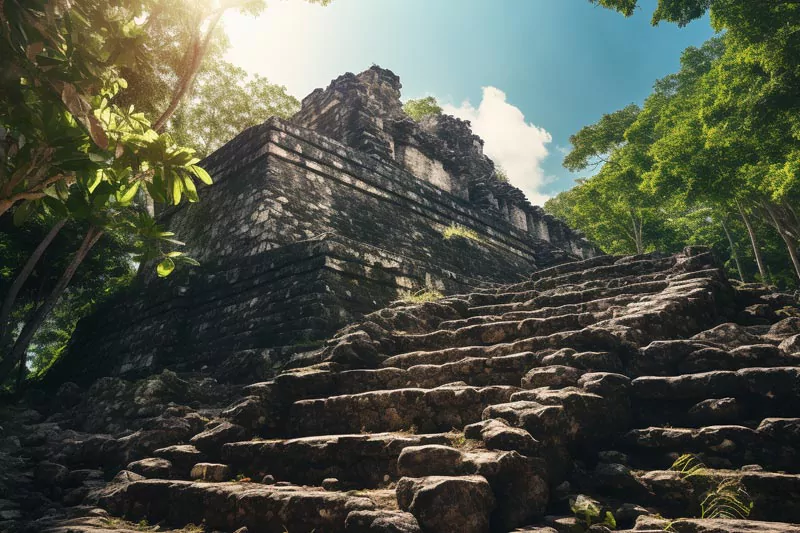
As you venture into the park, the first structure you’ll encounter is a rather small but fascinating pyramid, surrounded by other edifices and even tunnels that invite exploration.
As you delve deeper, you’ll discover more minor pyramids, mounds yet to be uncovered, and swathes of jungle to navigate.
Keep in mind that Coba is an active archaeological site, meaning that access to certain ruins may vary from day to day. If you find a particular pyramid or court closed to tourists, don’t be disheartened.
The park’s expanse is vast, and there’s always more to explore. Remember, every stone, every path, every piece of jungle has a story to tell.
The Coba Mayan Village
Around the ruins, you’ll find even more to explore. For instance, a visit to the local Mayan Village is an absolute must.
Interacting with the indigenous people, learning about their customs, traditions, and way of life, adds an entirely new dimension to your Coba journey.
It’s a genuine, authentic experience that takes you beyond the usual tourist trails and connects you with the living descendants of the great Mayan civilization.
Cost for Entry to the Coba Ruins
As with most archaeological sites, there’s an admission fee to access the park. While prices may vary slightly from year to year, as of the latest update, the general admission cost is modest, making Coba an affordable destination for history and culture enthusiasts.
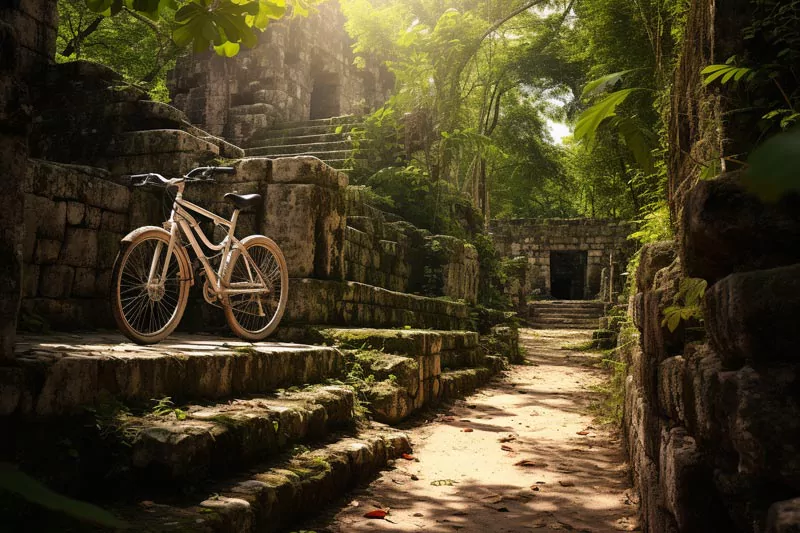
Do note that if you wish to hire a guide for an in-depth tour or rent a bike to get around the large site, those services come at an additional cost.
Hiring a guide can greatly enhance your visit, providing context and stories behind the structures, while renting a bike or a bicitaxi can save you time and energy navigating the expansive site.
Coba Ruins vs. Tulum Ruins: Which One To Visit
Deciding between the Coba Ruins and Tulum Ruins can be challenging, as both offer unique insights into the ancient Mayan civilization. Here’s a quick comparison to help you make the right choice for your trip:
Coba Ruins
- Size and Exploration: Coba is a much larger site, covering a vast expanse. It allows more adventurous exploration, with opportunities to hike, bike, or use a bicitaxi.
- Monuments: Coba boasts the Nohoch Mul Pyramid, which visitors can still climb, offering panoramic views of the surrounding jungle.
- Location: Located inland, it’s nestled within the jungle, providing a less touristy and more authentic archaeological experience.
- Archaeological Activity: As an active dig site, Coba presents the chance to see archaeologists at work, which can add to the excitement of the visit.
Tulum Ruins
- Size and Exploration: Tulum is a smaller site, easier to navigate on foot and less physically demanding than Coba.
- Monuments: Tulum is famous for its cliff-side Castillo, offering breathtaking views of the Caribbean Sea.
- Location: Situated on the coast, Tulum provides a unique combination of historical exploration and beach relaxation.
- Ease of Access: Tulum is easier to reach from major tourist spots like Cancún and Playa del Carmen, making it a more convenient choice for many travelers.
How to get to the Coba Ruins
Located in the heart of the Yucatán Peninsula, Mexico, getting there can be an adventure in itself.
- By Bus: ADO buses, the primary bus service in Mexico, run from Cancún, Tulum, and Valladolid to Coba. The buses are comfortable, air-conditioned, and affordable. The bus from Tulum to Coba typically takes about an hour.
- By Car: If you’re driving, the journey from Cancún or Playa del Carmen to Coba is straightforward. You’ll need to take Route 180 west towards Valladolid, then follow the signs to Coba. The drive takes approximately two to two and a half hours.
- Guided Tours: Another hassle-free option to reach is by joining a guided tour. Many tour companies operate from major cities like Cancún, Playa del Carmen, and Tulum, providing transportation, a guide, and sometimes even meals.
- Colectivos: For those looking for a local and inexpensive mode of transportation, consider taking a colectivo, or shared minivan, from Tulum. They are a popular and economical means of travel in the Yucatán Peninsula.
Getting Around the Coba Ruins
The vastness might come as a surprise. Believe me, this archaeological site is grander than you might initially imagine.
But don’t worry, getting around is part of the fun, and you’ve got three great options for traversing the terrain from the park’s entrance to the impressive Great Pyramid.
- Walking, Hiking: For those who love a good trek, walking or hiking is a viable option. There’s a broad and well-marked path with plenty of interesting sights along the way. But fair warning, it’s a considerable distance to cover. Yet, if you enjoy a good workout and don’t mind the extra time, lacing up your boots and hitting the path can be quite rewarding.
- Rent a Bike: Maybe you’d prefer a faster way to explore? Then renting a bike could be right up your alley. Conveniently located inside the Coba Ruins Archaeological Zone, bike rentals provide a time-efficient way to travel from one pyramid to another. The paths are flat and clear, making cycling a breeze and an enjoyable way to see the sights.
- Hire a Bicitaxi: If you’d like a mix of comfort and local flavor, hiring a bicitaxi is an option worth considering. In what could be considered an excellent deal, a bicitaxi can take you from the entrance (or anywhere inside the park) to the Great Pyramid and back again.
Video
Conclusion
Exploring the Coba Ruins is truly an unforgettable journey into the heart of the ancient Mayan civilization.
From the grandeur of the Nohoch Mul Pyramid to the intimate charm of the minor sites, Coba holds endless fascination for history buffs, adventurers, and casual travelers alike.
